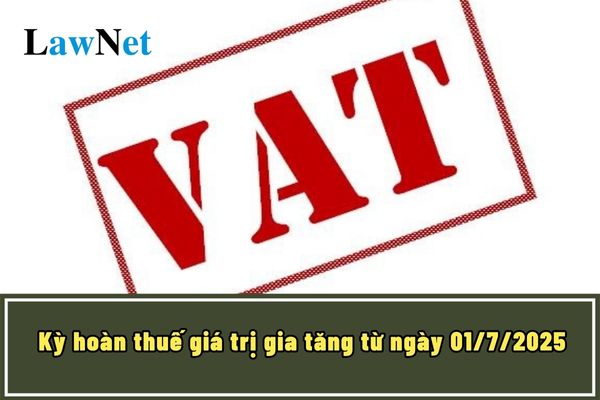What is the VAT refund period in Vietnam from July 1, 2025? What are the 8 prohibited acts in VAT refund in Vietnam?
What is the VAT refund period in Vietnam from July 1, 2025?
Currently, the law does not provide specific regulations regarding the VAT refund period. However, according to Article 15 of the 2024 VAT Law (effective from July 1, 2025), addressing the VAT refund, the VAT refund period can be understood as the timeframe during which businesses are allowed to carry out procedures for refunding the VAT paid into the state budget. The refund period is usually detailed in legal documents concerning taxation and may change over time.

What is the VAT refund period in Vietnam from July 1, 2025? What are the 8 prohibited acts in VAT refund in Vietnam? (Image from Internet)
What are the 8 prohibited acts in VAT refund in Vietnam?
Based on Article 13 of the 2024 VAT Law (effective from July 1, 2025), regarding VAT refunds as per the 2024 VAT Law from July 1, 2025, the following actions are prohibited:
Case 1. Buying, selling, or organizing advertisement and brokerage of purchase and sale of invoices.
Case 2. Setting up fake sales transactions or providing services that do not comply with the law.
Case 3. Issuing invoices for goods sale or service provision during a business suspension period, except for issuing invoices to clients for contracts signed before the notice of business suspension.
Case 4. Using illegal invoices and documents or unlawfully using invoices and documents as per the Government of Vietnam's regulations.
Case 5. Failing to transmit e-invoice data to the tax authority as required.
Case 6. Tampering with, misusing, unauthorized access, or destroying the information system regarding invoices and documents.
Case 7. Offering or receiving bribes, or involving in other acts related to invoices and documents to gain tax deduction, tax refund, tax embezzlement, or VAT evasion.
Case 8. Colluding, covering, or making illicit connections between tax management officials, tax management agencies, businesses, importers for the illegal use, possession of invoices and documents to gain tax deduction, refund, tax embezzlement, or VAT evasion.
What are the 3 levels of risk when tax authority inspects after tax refund in Vietnam?
According to Article 18 of Circular 31/2021/TT-BTC on applying risk management in tax refund:
The tax authority classifies refund dossiers according to the Law on Tax Administration, related legal documents, or current regulations. Based on risk classification results, the tax authority applies appropriate measures in handling refund dossiers:
- Classification for resolving refund dossiers
+ Refund dossiers with high tax risk: Conduct pre-refund audits
During 12 consecutive months from the beginning of the fiscal year, taxpayers consistently assessed with high risk:
++ If the ongoing risk assessment differs from the previous one in total risk points or criteria risk points, the refund dossier undergoes pre-refund checks.
++ If the ongoing risk assessment is similar or lower in total risk points compared to the previous one, leading to lower risk points, the next refund dossier doesn't require pre-refund checks.
- Conducting post-refund inspections and audits
+ The sequence of post-refund inspections and audits is based on overall risk points from high to low within five (5) years from the tax refund decision date:
++ High risk (for dossiers not subject to pre-refund audits as per point a, clause 1): Conduct audits within one (1) year from the refund decision date;
++ Medium risk: Conduct audits within three (3) years from the refund decision date;
+ Low risk: Conduct audits within five (5) years from the refund decision date;
+ Based on practical circumstances, tax authorities may conduct early post-refund inspections and audits.
+ The General Department of Taxation shall provide specific regulations on post-refund audits, combined with tax compliance audits and inspections.
Thus, the 3 levels of risk when the tax authority conducts post-refund inspections are:
- High risk
- Medium risk
- Low risk

